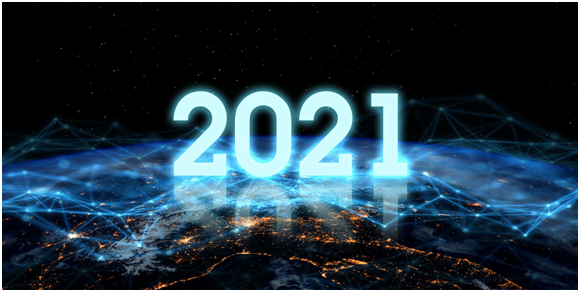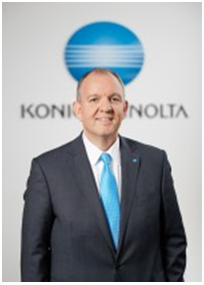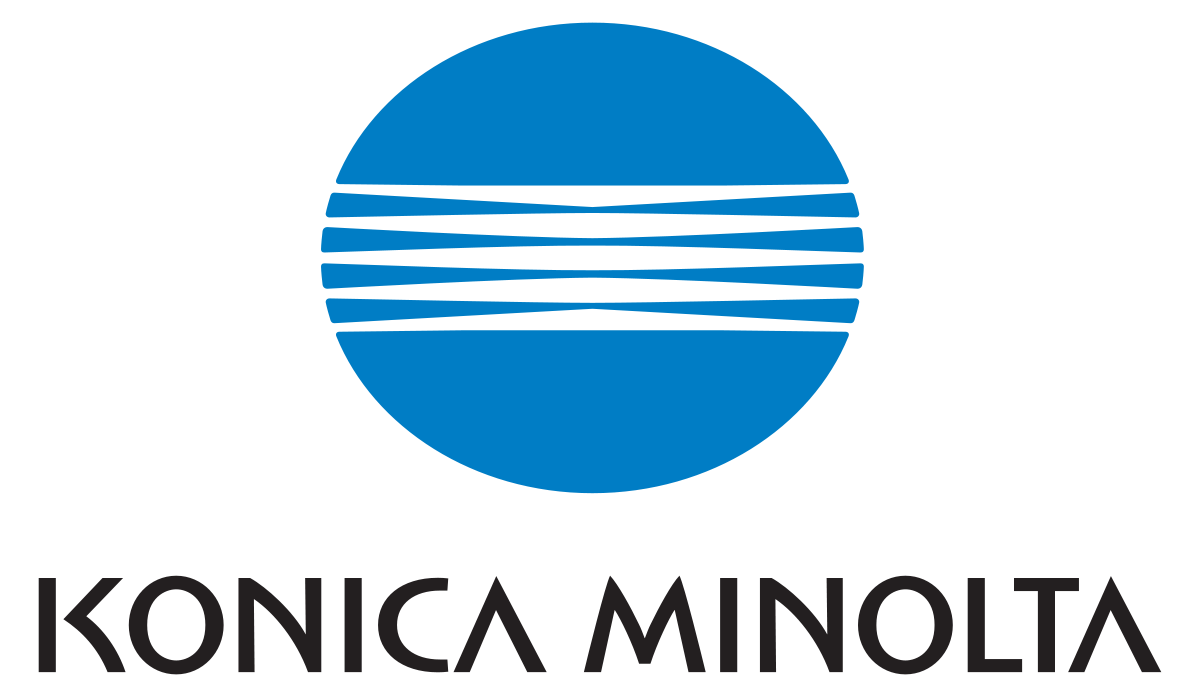What will shape the digital workplace in 2021?
The COVID-19 pandemic triggered an external shock of unprecedented magnitude for organisations large and small. In 2020, IT had therefore one prime goal: to find solutions to keep their employees working. For many companies, tools used to enable remote working meant they could continue to survive. This translated to a surge of requests for digital workplace solutions. And we saw a breakthrough for digitalisation, even amongst companies that had previously been reluctant to adapt digital processes or did not effectively pursue them as a high priority. According to the recently published ‘State of the Digital Workplace Report’ by SMG, ”after three years of relatively static figures, for the first time a clear majority of organisations (56%) stated the digital workplace was an ‘extremely’ or ‘very’ important priority, up from 48% in 2019”.[1] But how will 2021 follow this extraordinary year in terms of digitalisation requirements and developments? Konica Minolta’s experts Olaf Lorenz, Yoann Fortini, Shintaro Inoue and Jaromir Sponar offer some predictions. They expect that while 2020 was a year for finding solutions, 2021 will be the year for following these up with strategic approaches that address the new post-corona work reality. The imperatives for these strategies can be summed up with: ”grow, repair or replace and protect”. This is important, as 2021 will bring its own challenges as well as opportunities for organisations across the globe.
 “
“ Despite all the challenges and hurdles organisations faced in 2020, let’s start on a positive note: From a digital work perspective, we were never as ready as we are today to deal with the workplace-related implications of such a pandemic. A mere decade earlier, and most of the companies that were now able to let their employees work from home would not have been able to do so. The economic downturn would have been even worse. Simply put: Many businesses would not have had the means to survive – but today, thankfully, we did.
Despite all the challenges and hurdles organisations faced in 2020, let’s start on a positive note: From a digital work perspective, we were never as ready as we are today to deal with the workplace-related implications of such a pandemic. A mere decade earlier, and most of the companies that were now able to let their employees work from home would not have been able to do so. The economic downturn would have been even worse. Simply put: Many businesses would not have had the means to survive – but today, thankfully, we did.
Olaf Lorenz, Senior General Manager Digital Transformation Division, Konica Minolta Business Solutions Europe GmbH „
Unsurprisingly, the digital workplace solutions provider Konica Minolta saw a surge in demand for solutions related to remote work and remote collaboration in particular. ”Within weeks, IT departments around the globe where in charge of completely reshaping their infrastructure and workplaces. While a significant number already had the capabilities to have some of their workforce off-premise, almost nobody had prepared for a scenario where everyone would work from home”, adds Yoann Fortini, IT Services Go-To-Market Senior Manager at Konica Minolta Business Solutions Europe: ”It is impressive to see what they were able to achieve at such short notice. In most cases, this was aided by existing digitalisation strategies and solutions, built up over the past years. Yet, the clear focus was on ensuring everyone could work; the pandemic was not the time for sophisticated strategic approaches. 2020 was marked by ad hoc swift responses. This will have to change in 2021. We will need to return to dedicated strategic digitalisation approaches with a view of long-term change. Let’s be clear: pre-corona working methods are a thing of the past. We now see the potential digitalisation has for organisations and their employees alike.”
Trend 1: The hybrid office will be the new workplace
2020 led to an irreversible and fundamental shift in the meaning of the workplace: ”Disconnecting the term ‘workplace’ from a specific geographic location has been proclaimed a consequence of digital working methods for some time. Now, as a response to the pandemic, this has become a reality much more quickly than expected. In many cases, to keep workflows going, organisations have had to compromise, allowing for example, bring your own device (BYOD) strategies that they had previously dismissed”, says Olaf Lorenz: ”In 2021, we will be entering the era of the hybrid office. This hybrid workplace will have to provide employees with seamless and efficient workflows – independent of whether they are working from their office location or from any other place.” The industry experts from IDC expect that ”by 2023, 75% of G2000 companies will commit to providing technical parity to a workforce that is hybrid by design rather than by circumstance, enabling them to work together separately and in real time”.[2] Yet, by no means will this development be limited to large companies: IDC also expects already by 2021 that ”at least 70% of digitally enabled SMBs will operate under a hybrid model of working, with remote work emerging as a norm”[3] Thus, across organisations, the physical office space will become smaller, reducing the ‘real estate footprint’ that businesses have. This will also change the requirements for IT.
“ IT will no longer consist of a central internal network with external access enabled. Rather, its role will transform: it will manage a decentralised network of devices. These devices are intelligently connected and communicate with each other from a multitude of internal access points. We have set up our Intelligent Connected Workplace portfolio to cater to the needs of our customers in making the transition towards the hybrid office.
IT will no longer consist of a central internal network with external access enabled. Rather, its role will transform: it will manage a decentralised network of devices. These devices are intelligently connected and communicate with each other from a multitude of internal access points. We have set up our Intelligent Connected Workplace portfolio to cater to the needs of our customers in making the transition towards the hybrid office.
Yoann Fortini, IT Services Go-To-Market Senior Manager, Konica Minolta Business Solutions Europe GmbH „
Konica Minolta’s Workplace Hub is a prime example of such a solution. It combines everything organisations need – from solutions for secure and effective remote work and collaboration to digital workflow solutions.
With increasing location independence of the employees, the printing infrastructure will also have to be managed differently. Cloud printing solutions such as those offered by Konica Minolta provide users the flexibility of location-independent printing, while at the same time unburdening the IT from the increased complexity this multi-location approach entails, while providing the highest level of security needed in the hybrid office reality.
Trend 2: Adapting security, safety and compliance to the hybrid office
The transformation towards hybrid offices must be accompanied by a new, holistic approach to security, in order to avoid negative consequences. ”The parameters for protecting your business have significantly shifted in 2020 – this will make an overhaul of the security strategy necessary for many businesses”, says Yoann Fortini. He expects this to include more secure and compliant information management systems, premises security solutions as well as managed security and disaster recovery services. This first and foremost starts with IT, as cyber criminality has quickly adapted to the new work reality: 2020 saw a steep increase in ransomware and data theft attempts trying to exploit insecure home office work processes[4]. ”We unfortunately have to expect a further professionalisation of these attacks in 2021, strategically targeting the ‘weak links’ an unprepared IT may have”, states Yoann Fortini. To provide its customers with solutions to counteract these threats, Konica Minolta has made security an integral element in all of its Intelligent Connected Workplace offerings. ”We have designed our digital workplace solutions to have security ‘built-in’ – whether infrastructure, cloud services, information management, managed print services, to name a few”, he explains. At the same time, compliance is ensured when storing, handling and processing data, independent of the user access point.
The shift towards hybrid offices will also have security implications in terms of physical workplaces: With fewer employees on premise and, due to the higher home office presence in residential areas, we may see an increase in attempted break-ins to commercial buildings.
“  Intelligent perimeter protection is becoming more important. Our intelligent MOBOTIX video solutions help address those. Further solutions exist for the health protection of employees: We are, for example, able to provide solutions for measuring the body temperature of visitors entering premises.
Intelligent perimeter protection is becoming more important. Our intelligent MOBOTIX video solutions help address those. Further solutions exist for the health protection of employees: We are, for example, able to provide solutions for measuring the body temperature of visitors entering premises.
Shintaro Inoue, Senior Manager Video Solution Service, Konica Minolta Business Solutions Europe „
Trend 3: Having to work with limited budgets to implement big change
With interruptions in both their supply chains and markets, 2020 will strain the financials of many companies across most industries. According to SMG, ”budget constraints have become a challenge for a larger number of organisations, with 41% of respondents in the third quarter.”[5] This will place constraints on their budgets, even for high-priority activities such as digitalisation, so they must be utilised as efficiently as possible. ”Cost-intensive capital expenses such as those for on-premise scenarios will give way to flexible and scalable hybrid and cloud-based solutions, enabling businesses to pay for what they use, rather than for what they own”, states Yoann Fortini. ”This too is a trend we’ve seen develop over the past years that has now been accelerated by the pandemic.” Konica Minolta’s portfolio provides its customers with a broad range of XaaS offerings based on monthly subscription fees – from application monitoring, back-up management to printing as a service. At the same time, this ensures their IT is always up-to-date and meets the latest security standards. ”In times of uncertainty, this is a real game changer for our customers: they are not burdened with high fixed costs, rather their costs scale up and down along with their business, providing them with the agility they need”, Yoann Fortini says. ”In addition, we have to keep in mind that – unaffected by the current pandemic – our customers face a skilled labour shortage in IT. Outsourcing can help address this issue while at the same time limiting expenditure.”
Trend 4: Process automation and data-driven decision making on the rise
With limited budgets, large and small organisations will face a further challenge in 2021 with regard to their skilled labour. ”In fact, organisations will need to use their most valuable resource as best as possible – their employees. Arduous repetitive manual tasks are definitely not part of those application fields”, says Jaromir Sponar, ITS Business Development Manager, Microsoft MVP at Konica Minolta IT Solutions Czech. ”Manual processes with arduous tasks using small parts lead to errors and frustrated employees. Replacing those with Robotic Process Automation (RPA) means that repetitive tasks will be taken over by process robots – making fewer mistakes. Thus, employees can do more sophisticated tasks and we can increase their satisfaction”, Sponar states.
The same positive effect can be achieved by using intelligent video solutions in manufacturing companies, knows Shintaro Inoue: ”For instance, our MOBOTIX intelligent video solutions record and analyse the performance of machines on the shop floor. Thus, qualified personnel can use these data and figure out the reasons for low productivity and optimise production workflows.”
Data-based decision-making solutions, such as those founded on Microsoft Power BI and implemented by Konica Minolta, will take this one step further, supporting knowledge workers in making better decisions.
“  In markets increasingly shaped by volatility and complexity, fast, fact-based decision making can be a make-or-break success factor for businesses. Similar to how the pandemic in 2020 has created a breakthrough for digital workplaces, the volatile business environment of 2021 and beyond will create the demand for such decision-making solutions.
In markets increasingly shaped by volatility and complexity, fast, fact-based decision making can be a make-or-break success factor for businesses. Similar to how the pandemic in 2020 has created a breakthrough for digital workplaces, the volatile business environment of 2021 and beyond will create the demand for such decision-making solutions.
Jaromir Sponar, ITS Business Development Manager, Microsoft MVP, Konica Minolta IT Solutions Czech a.s. „
Trend 5: Digital workplaces – a steppingstone for more sustainable growth?
”Digital transformation enables us to rethink what is necessary, especially with regard to mobility-related emissions”, says Olaf Lorenz. ”This includes both daily commuting as well as business travel. Collaboration tools not only make communication and networking across different locations seamless – they are a good option when looking to avoid CO2 emissions resulting from business travel. This way, our collaboration tools such as Workplace Go can help the organisations effectively improve their CO2 footprint.”
According to Olaf Lorenz, an organisation’s future ability to grow will depend on its capability to navigate the shift to a low carbon, clean technology economy. Here, a higher digital maturity of the organisation can help achieve these goals: ”Of course, digital information management helps reduce the amount of paper used – and therefore lower the amount of natural resources required.” However, he also states: ”Yet, we must consider that digital processes use energy as well – here, efficiency gains and renewable sourcing are key – and they will play an even greater role in years to come. Sustainability will therefore be a focus in the digitalisation strategies of 2021 and beyond.”
”Grow, replace or repair and protect” as a strategic guideline for 2021
Therefore, while 2020 has undoubtedly been an extraordinarily intense year for all organisations, 2021 will hold ample challenges for them as well. ”With all that has been achieved in these busy past months, 2021 will see a general overhaul of the digital landscapes in companies. We expect a further pursuit of the already initiated transformation activities. Yet, businesses will also revisit many solutions that have been swiftly implemented in the wake of the pandemic. They will aim at repairing or replacing them where necessary, so as to improve efficiency, but also – probably at least as important – to enhance security and compliance”, Olaf Lorenz concludes.
[1] SMG: ”Reworked State of the Digital Workplace Report 2020”, Q3 2020: https://www2.reworked.co/cw-cp-state-of-dw-2020.htmlhttps://www2.reworked.co/cw-cp-state-of-dw-2020.html
[2] IDC: ”FutureScape: Worldwide IT Industry 2021 Predictions”, IDC # 46942020, October 2020: https://www.idc.com/getdoc.jsp?containerId=US46942020
[3] IDC: ”FutureScape: Worldwide Small and Medium-Sized Business 2021 Predictions”, IDC #US45927020, October 2020: https://www.idc.com/getdoc.jsp?containerId=US45927020
[4] Barracuda, Threat Spotlight: Coronavirus-Related Phishing, 2020, https://blog.barracuda.com/2020/03/26/threat-spotlight-coronavirus-related-phishing/
[5] SMG: ”Reworked State of the Digital Workplace Report 2020”, Q3 2020: https://www2.reworked.co/cw-cp-state-of-dw-2020.htmlhttps://www2.reworked.co/cw-cp-state-of-dw-2020.html
Boilerplate
About Konica Minolta Business Solutions Europe
Konica Minolta Business Solutions Europe GmbH, based in Langenhagen, Germany, is a wholly owned subsidiary of Konica Minolta Inc., Tokyo, Japan. Konica Minolta enables its clients to champion the digital era: with its unique imaging expertise and data processing capabilities, Konica Minolta creates relevant solutions for its customers and solves issues faced by society. As a provider of comprehensive IT services, Konica Minolta delivers consultancy and services to optimise business processes with workflow automation. The company further offers its customers solutions and managed services in the field of IT infrastructure and IT security as well as cloud environments. With regard to its office printing solutions, “IDC MarketScape: Worldwide Print Transformation 2020 Vendor Assessment” stated that Konica Minolta is “recognised globally as a leader in print transformation”. As a strong partner for the professional printing market, Konica Minolta offers business consulting, state-of-the-art technology and software and has established itself as the production printing market leader for more than a decade in Europe (InfoSource). Its Business Innovation Centre in London and four R & D laboratories in Europe enable Konica Minolta to bring innovation forward by collaborating with its customers as well as academic, industrial and entrepreneurial partners. For its innovative service approach that complements their devices perfectly, Konica Minolta was awarded the prestigious ‘”Buyers Lab PaceSetter Award for Serviceability and Support 2020/2021″ by Keypoint Intelligence. Konica Minolta Business Solutions Europe is represented by subsidiaries and distributors in more than 80 countries in Europe, Central Asia, the Middle East and Africa. With approximately 10,000 employees (as of April 2020), Konica Minolta Europe earned net sales of over 2.34 billion in financial year 2019/2020.
For more information, please visit http://newsroom.konicaminolta.eu/ and follow Konica Minolta on Facebook, YouTube and Twitter @KonicaMinoltaEU.
Terms and product names may be trademarks or registered trademarks of their respective holders and are hereby acknowledged.
SOURCE Konica Minolta Europe


